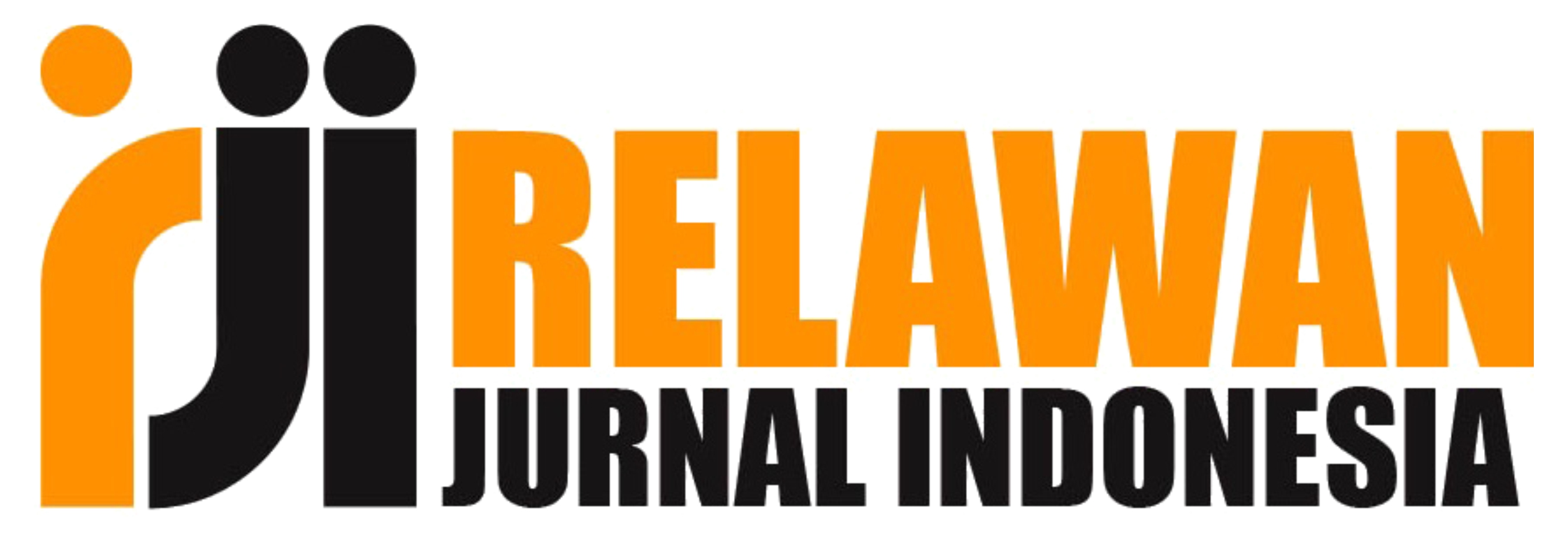Environmental Concern: Antecedents of Ecotourism Visit Intention with Time Perspective and Destination Image as Determination Variables
Abstract
Keywords
Full Text:
PDFReferences
Afshardoost, M., & Eshaghi, M. S. (2020). Destination image and tourist behavioural intentions: A meta-analysis. Tourism Management, 81, 104154. https://doi.org/10.1016/j.tourman.2020.104154
Ahmad, A., Shaliza, N., Zuraimi, M., & Jamaludin, A. (2022). The Influence of Tourists’ Visit Intention Attributes of Recovery Aspect on Destination Image in the Post-crisis. In Tourism Risk (pp. 143–154). Emerald Publishing Limited. https://doi.org/10.1108/978-1-80117-708-520221010
Björk, P. (2000). Ecotourism from a Conceptual. International Journal of Tourism Research, 202(2), 189–202.
Chaokromthong, K., & Sintao, N. (2021). Sample Size Estimation using Yamane and Cochran and Krejcie and Morgan and Green Formulas and Cohen Statistical Power Analysis by G* Power and Comparisions. Apheit International Journal, 10(2), 76-86.
Chen, C. F., & Tsai, D. C. (2007). How do destination image and evaluative factors affect behavioral intentions? Tourism Management, 28(4), 1115–1122. https://doi.org/10.1016/j.tourman.2006.07.007
Chi, N. T. K., & Pham, H. (2022). The moderating role of eco-destination image in the travel motivations and ecotourism intention nexus. Journal of Tourism Futures. https://doi.org/10.1108/JTF-01-2022-0014
Chiu, Y. T. H., Lee, W. I., & Chen, T. H. (2014). Environmentally responsible behavior in ecotourism: Antecedents and implications. Tourism Management, 40, 321–329. https://doi.org/10.1016/j.tourman.2013.06.013
Dagustani, D., Kurniawan, G.I., Vidyastuti, H. A. and M. (2021). Model of Increasing Tourists Revisit Intention: Utilizing the Environment as an Ecotourism Area. Environmental, Social, and Governance Perspectives on Economic Development in Asia (International Symposia in Economic Theory and Econometrics, 29 B, 207–219. https://doi.org/https://doi.org/10.1108/S1571-03862021000029B034
Doran, R., Hanss, D., & Larsen, S. (2017). Intentions to make sustainable tourism choices: do value orientations, time perspective, and efficacy beliefs explain individual differences?†. Scandinavian Journal of Hospitality and Tourism, 17(3), 223–238. https://doi.org/10.1080/15022250.2016.1179129
Faul, F., Erdfelder, E., Lang, A.-G., & Buchner, A. (2007). G*Power 3: A flexible statistical power analysis program for the social, behavioral, and biomedical sciences. Behavior Research Methods, 39(2), 175-191. doi: 10.3758/BF03193146
Hadinejad, A., D. Moyle, B., Scott, N., Kralj, A., & Nunkoo, R. (2019). Residents’ attitudes to tourism: a review. Tourism Review, 74(2), 157–172. https://doi.org/10.1108/TR-01-2018-0003
Hair, J. F., Risher, J. J., Sarstedt, M., & Ringle, C. M. (2019). When to use and how to report the results of PLS-SEM. European Business Review, 31(1), 2-24. doi: https://doi.org/10.1108/EBR-11-2018-0203
Hair Jr, J. F., Hult, G. T. M., Ringle, C., & Sarstedt, M. (2016). A primer on partial least squares structural equation modeling (PLS-SEM): Sage Publications.
Hair Jr, J. F., Sarstedt, M., Ringle, C. M., & Gudergan, S. P. (2017). Advanced issues in partial least squares structural equation modeling: SAGE Publications.
Holden, A. (2019). Environmental ethics for tourism- the state of the art. Tourism Review, 74(3), 694–703. https://doi.org/10.1108/TR-03-2017-0066
Huang, Y. C., & Liu, C. H. S. (2017). Moderating and mediating roles of environmental concern and ecotourism experience for revisit intention. International Journal of Contemporary Hospitality Management, 29(7), 1854–1872. https://doi.org/10.1108/IJCHM-12-2015-0677
Hultman, M., Kazeminia, A., & Ghasemi, V. (2015). Intention to visit and willingness to pay premium for ecotourism: THE impact of attitude, materialism, and motivation. Journal of Business Research, 68(9), 1854–1861. https://doi.org/10.1016/j.jbusres.2015.01.013
Jeong, Y., & Kim, S. (2020). A study of event quality, destination image, perceived value, tourist satisfaction, and destination loyalty among sport tourists. Asia Pacific Journal of Marketing and Logistics, 32(4), 940–960. https://doi.org/10.1108/APJML-02-2019-0101
Kia, Z. (2021). Ecotourism in Indonesia: Local Community Involvement and The Affecting Factors. Journal of Governance and Public Policy, 8(2), LAYOUTING. https://doi.org/10.18196/jgpp.v8i2.10789
Lemy, D. M., Teguh, F., & Pramezwary, A. (2019). TOURISM DEVELOPMENT IN INDONESIA: Establishment of Sustainable Strategies. Bridging Tourism Theory and Practice, 11, 91–108. https://doi.org/10.1108/S2042-144320190000011009
Lin, G. T. R., & Sun, C. (2009). Factors influencing satisfaction and loyalty in online shopping: an integrated model. Online Information Review, 33(3), 458–475. https://doi.org/10.1108/14684520910969907
Lu, J., Hung, K., Wang, L., Schuett, M. A., & Hu, L. (2016). Do perceptions of time affect outbound-travel motivations and intention? An investigation among Chinese seniors. Tourism Management, 53, 1–12. https://doi.org/10.1016/j.tourman.2015.09.003
Luo, Yadong. (2016). Toward a reverse adaptation view in cross-cultural management. Cross Cultural & Strategic Management, 23(1), 29–41. https://doi.org/10.1108/CCSM-08-2015-0102
Luo, Yanju, & Deng, J. (2008). The new environmental paradigm and nature-based tourism motivation. Journal of Travel Research, 46(4), 392–402. https://doi.org/10.1177/0047287507308331
McNally, M. A., & Maroun, W. (2018). It is not always bad news: Illustrating the potential of integrated reporting using a case study in the ecotourism industry. Accounting, Auditing and Accountability Journal, 31(5), 1319–1348. https://doi.org/10.1108/AAAJ-05-2016-2577
Nunnally, J. (1978). Psychometric Theory 2nd ed. New York: McGraw-Hill.
Orams, M. B. (2012). Towards a more desirable form of ecotourism. Tourism Management, 315–323. https://doi.org/10.4324/9780080519449-31
Pham, H. S. T., & Khanh, C. N. T. (2021). Ecotourism intention: the roles of environmental concern, time perspective and destination image. Tourism Review, 76(5), 1141–1153. https://doi.org/10.1108/TR-09-2019-0363
Puhakka, R. (2011). Environmental concern and responsibility among nature tourists in Oulanka PAN Park, Finland. Scandinavian Journal of Hospitality and Tourism, 11(1), 76–96. https://doi.org/10.1080/15022250.2011.532589
Quynh, N., Hoai, N. T., & Loi, N. Van. (2021). The role of emotional experience and destination image on ecotourism satisfaction. Spanish Journal of Marketing - ESIC, 25(2), 312–332. https://doi.org/10.1108/SJME-04-2020-0055
Ringle, C. M., Wende, S., & Becker, J.-M. (2022). SmartPLS 4. from https://www.smartpls.com
Ronald Ricardo. (2019). Devisa Pariwisata Mencapai US$19,29 Miliar. https://ameera.republika.co.id/berita/senggang/blitz/19/08/23/pwoifz19000-kemenpar-devisa-pariwisata-mencapai-us1929-miliar?
Samkin, G. and Wingard, C. (2021). Understanding systemic change in the context of the social and environmental disclosures of a conservation organization in a developing country. Accounting, Auditing & Accountability Journal, 34(5), 1275–1304. https://doi.org/https://doi.org/10.1108/AAAJ-05-2019-4010
Schaffer, V., & Tham, A. (2020). Engaging tourists as citizen scientists in marine tourism. Tourism Review, 75(2), 333–346. https://doi.org/10.1108/TR-10-2018-0151
Shi, H., Liu, Y., Kumail, T., & Pan, L. (2022). Tourism destination brand equity, brand authenticity and revisit intention: the mediating role of tourist satisfaction and the moderating role of destination familiarity. Tourism Review, 77(3), 751–779. https://doi.org/10.1108/TR-08-2021-0371
Susilowati, M. G. W. K., Wahyuningdyah, R. Y., & Kurniasari, W. (2017). Development of intervention model of staple food consumption pattern from rice toward alternative staple food: Consumer’s belief. Advanced Science Letters. https://doi.org/10.1166/asl.2017.9302
Teeroovengadum, V. (2019). Environmental identity and ecotourism behaviours: examination of the direct and indirect effects. Tourism Review, 74(2), 257–269. https://doi.org/10.1108/TR-11-2017-0190
Thi Khanh, C. N., & Phong, L. T. (2020). Impact of environmental belief and nature-based destination image on ecotourism attitude. Journal of Hospitality and Tourism Insights, 3(4), 489–505. https://doi.org/10.1108/JHTI-03-2020-0027
Wismantoro, Y., Aryanto, V. D. W., Pamungkas, I. D., Purusa, N. A., Amron, Chasanah, A. N., & Usman. (2022). Virtual Reality Destination Experiences Model: A Moderating Variable between Wisesa Sustainable Tourism Behavior and Tourists’ Intention to Visit. Sustainability, 15(1), 446. https://doi.org/10.3390/su15010446
Zhang, H., & Lei, S. L. (2012). A structural model of residents’ intention to participate in ecotourism: The case of a wetland community. Tourism Management, 33(4), 916–925. https://doi.org/10.1016/j.tourman.2011.09.012
DOI: http://dx.doi.org/10.56444/mem.v38i2.3945
Refbacks
- There are currently no refbacks.
Copyright (c) 2023 Media Ekonomi dan Manajemen

This work is licensed under a Creative Commons Attribution 4.0 International License.
Â

This work is licensed under a Creative Commons Attribution 4.0 International License.






